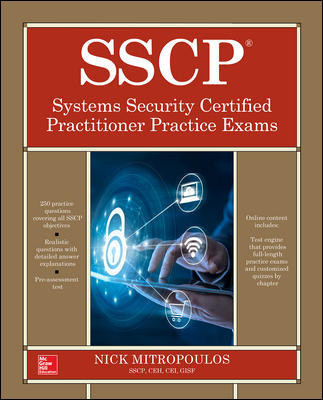Home Control Adds Sizzle to Security Systems

Honeywell's Lyric system, scheduled for availability before year-end, integrates home control and security and can be controlled from a keypad or from a smartphone or tablet.
PHOTO COURTESY OF HONEYWELL

Smartphone control of home control functions has helped fuel consumer interest in home control systems.
PHOTO COURTESY OF BOSCH SECURITY

The Helix system from Resolution Products eliminates the need for a wall-mounted panel. Instead the central controller connects to a broadband connection and uses a smartphone or tablet for keypad functionality.
PHOTO COURTESY OF RESOLUTION PRODUCTS

Dealers that need to upgrade customers from 2G to 3G wireless communications can also gain home control capability by adding a Novatel module that works with an Icontrol system and which also supports Z-Wave and Wi-Fi.
PHOTO COURTESY OF ICONTROL




Including home control can bring a lot of positive changes to the business of selling, installing and maintaining a security system — including increasing the dollar value of a sale, of recurring monthly revenue (RMR), enhancing customer loyalty, and more.
The security dealer has more choices than ever when it comes to security/home control equipment. SDM spoke to equipment manufacturers about the choices available and the important decisions that dealers must make in selecting what to use.
All-in-One or Add-On
Although home control once was reserved for the most upscale homeowners who could afford sophisticated technology, it’s now within reach of a typical security system buyer. Sophisticated technology is now housed in a data center cloud, to which today’s systems connect using landline broadband or cellular data connectivity. And smartphone apps now enable control and monitoring capability that previously required costly dedicated devices.
Homeownersoften become excited about buying a security system when they learn that they can use their smartphones to adjust the thermostat while driving home; to unlock a door to let a cleaning person in; or to check whether they have closed the garage door and if not, to close it. These capabilities are all made possible using a mobile app.
According to Rob Puric, director of Connected Home for Melville, N.Y.-based manufacturer Honeywell Security, more than 70 percent of homes have broadband, and smartphone owners represent at least 50 percent of wireless subscribers. For that reason, Honeywell made a conscious decision to build home control technology into every one of the new Lyric alarm panels the company plans to launch before year-end, Puric notes.
The all-in-one approach “gives integrators more chance to sell more solutions,” argues Steve Connor, senior product line manager for Carlsbad, Calif.-based manufacturer Nortek Security & Control, which offers the 2Gig alarm panel that has home control capability built in. Demonstrating home control capabilities, including smartphone control and monitoring, can help seal a deal — and when home control is part of a sale, both upfront and recurring revenue can increase.
Companies operating data center clouds, including equipment manufacturers and third parties, charge dealers on a monthly basis for processing communications to and from end users’ smartphones — and dealers typically pass this cost on to the customer, often with a mark-up.
Rather than building home control capabilities into an alarm panel, some manufacturers instead offer home control through an add-on module — an approach that also can increase upfront and recurring revenue while also enabling dealers to retrofit an existing system without replacing the panel. Some add-on modules only work with specific panels. But Corey Gates, chief technology officer for Redwood City, Calif.-based manufacturer Icontrol Networks Inc., says the Icontrol One offering can add home control capability to virtually any existing alarm panel.
Communications Is Key
Another important decision that dealers must make involves communications technologies. It’s quite common for manufacturers to use a different communications technology for alarm devices such as motion detectors and window contacts than they do for home control devices such as door locks, light controllers and thermostats. Often the wireless technology used for alarm devices is proprietary and may include advanced encryption technology.
When it comes to wireless communications with home control devices, many security equipment manufacturers use Z-Wave because it is an open standard and there is a wide range of Z-Wave equipment already on the market — although they note that another wireless technology, Zigbee, is also an option.
Some cable companies that offer alarm systems have opted to use Zigbee, Gates says. Currently Zigbee offers “a bit more bandwidth” than Z-Wave, he explains. Zigbee shares the 2.4 GHz band with Wi-Fi but developers have added technology to help ensure that devices don’t transmit on the same frequency at the same time as Wi-Fi devices. Z-Wave operates in the 900 MHz band, which in the past was commonly used by cordless phones, but today cordless phones have largely cleared out of that band. Developers behind both Zigbee and Z-Wave continue to make improvements to the technologies, Gates adds.
Dave Mayne, vice president of marketing for Hudson, Wis.-based manufacturer Resolution Products Inc., notes that the coverage range of an individual Z-Wave sensor is less than that of most wireless technology used by manufacturers for security sensors — only about 30 feet. But Z-Wave overcomes this limitation by using a mesh approach so that individual devices act as repeaters for one another, thereby extending range.
Dealers can minimize their need to use Z-Wave devices as repeaters for one another by using the iBridge system from Amityville, N.Y.-based manufacturer Napco Security Technologies Inc., observes Jorge Hevia, senior vice president of marketing and sales for Napco. Napco has made refinements to the Z-Wave technology built into iBridge receivers that extend the coverage distance between the receiver and Z-Wave devices, Hevia explains.
Some devices used with security and home control systems also may use Wi-Fi connectivity. Video cameras, for example, require more bandwidth than technologies such as Zigbee or Z-Wave can support. And at least one manufacturer — Tyco — uses Wi-Fi to connect a thermostat to its system.
Keypads, Keyfobs, Mobile Apps
Along with home control capabilities have come some new keypad options. In additional to traditional wired keypads or self-contained keypad/control options, some manufacturers offer wireless keypads —and some new thinking has gone into designing these.
Napco, for example, offers a keypad that uses 802.11 technology for communications. This enables the keypad to send a considerable amount of information, thereby supporting a wide range of functionality. Achieving that requires more power than a traditional battery can support, however, so the product is designed to plug into an electrical outlet.
Nortek/ 2Gig also offers a wireless keypad with advanced features that draws power from an electrical outlet.
Meanwhile, Resolution Products offers a keypad that can operate for more than a year on traditional triple-A batteries, according to Mayne. The company achieved that, in part, by using technology similar to what is built into some e-readers that enables an image to remain on a screen without drawing power, Mayne explains.
By relying on that keypad and/or remote control from an app, Resolution Products eliminated a traditional panel from its system, relying instead on a router-like device that can connect to a homeowner’s broadband connection at the point the connection enters the house, often in a home office.
Some other manufacturers also give end users the ability to use a smartphone or tablet app as an alternative to a keypad. Some smartphone home control apps work over a cellular connection to the data center cloud. But others use the mobile device’s Bluetooth or Wi-Fi capability to communicate directly with the system without going through the cloud — an approach that eliminates any cellular reception issues and may boost response times.
Just a few months after the Apple Watch was introduced, eKeypad Mobile Solutions released an app for the Apple Watch that integrates with Elk Products’ security and home control system, notes Amy Strickland, marketing design manager for Hildebran, N.C.-based Elk Products. The app connects to Elk’s M1 security and home control system directly through the IP/ Ethernet interface, Strickland says.
“This can be over Wi-Fi for a local network connection, or using the device’s Internet/cellular data plan connection for remote access,” she says.
Wireless keyfobs also are available to control some security and home control systems, and some of these keyfobs can be customized to meet an individual user’s needs. Tom Mechler, product marketing manager for Fairport, N.Y.-based manufacturer Bosch Security Systems Inc., notes that Bosch offers a keyfob for use with the company’s security panel and add-on home control module that can be programmed, for example, to close a garage door.
Some of today’s systems offer traditionally high-end features such as the ability to use scene functionality to control light controls and other devices.
Honeywell’s Lyric system will come with four pre-programmed scenes — home, away, vacation and bedtime — that make appropriate adjustments to lighting and other controls and which can be controlled from the mobile app, Puric notes. Custom scenes also can be created. For example, a homeowner might want a “party” or “movie night” scene.
The Lyric system also will offer another means of control, Puric says. Homeowners will be able to speak commands such as “Wake up” or “Bedtime” to trigger specific scenes. (See “Honeywell Shows a New Premium Connected Home Security System at CES” at www.SDMmag.com/Honeywell-shows-connected-home-system-CES.)
Any security dealers that haven’t been selling home control with security could be missing out. By adding the sizzle to security systems, home control can help make a sale and boost revenues — and by keeping customers engaged, home control also increases the likelihood that customers will renew contracts when their current contracts expire. n
SIDEBAR: The Video Edge
At the same time that the cost of home control is decreasing, the costs of adding video to a security system also are declining. And often the same smartphone and tablet apps that support home control capabilities also can control and monitor video cameras. Many customers welcome the ability to check in on video cameras or to have an image sent automatically to their smartphones when a child arrives home from school.
Manufacturers continue to make advances on the video front. Icontrol, for example, offers a high-definition video security camera. According to Icontrol’s Corey Gates, the camera uses H.264 compression, which can send a high-definition image over a 3G wireless or faster connection.
Dealers may be able to boost recurring monthly revenue by offering customers the ability to store video events in the data center cloud, as many of the same cloud providers supporting smartphone apps also provide this capability.
Alternatively, Napco Security Technologies offers a rather unique on-premises video storage option. The company makes a storage device that doesn’t look like a traditional digital video recorder but instead resembles a disc drive. As Jorge Hevia of Napco explains, this approach enables the storage device to “hide in plain sight.”
SIDEBAR: Thread: An Emerging Z-Wave Alternative
Today, home control equipment aimed at security dealers is most likely to use Z-Wave for communications with home control devices such as lighting controls and door locks. But at least one manufacturer is looking at an emerging technology that could potentially be another alternative to Z-Wave.
“We’re looking at Thread,” commented Neil Evans, senior product manager for hybrid systems for Westford, Mass.-based manufacturer Tyco Security Products.
Tyco is part of a non-profit consortium called Thread Group that is spearheading Thread. Participants also include Samsung, Yale Security, Freescale Semiconductor, Nest Labs, Qualcomm and more than 150 other companies.
Like Z-Wave, Thread is designed to be a wireless mesh technology. Additionally it is designed to operate at low power levels. The Thread protocol was released to product developers in July and consumer products supporting the technology are expected on the market before the end of the year.
Looking for a reprint of this article?
From high-res PDFs to custom plaques, order your copy today!











